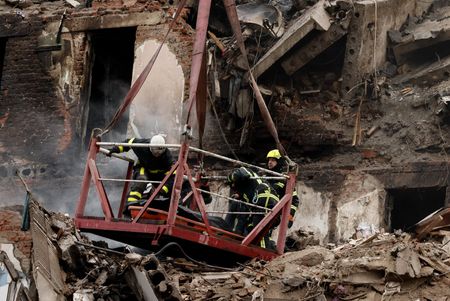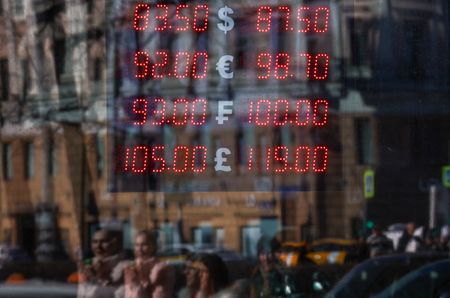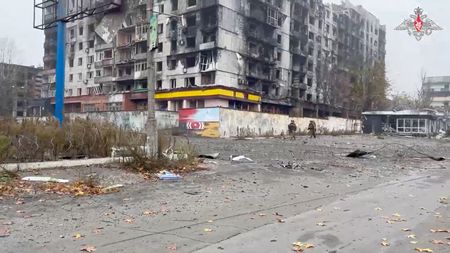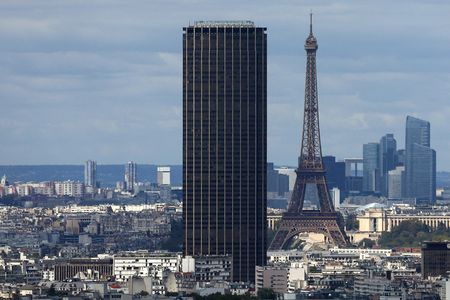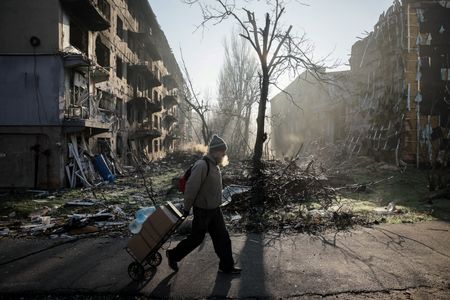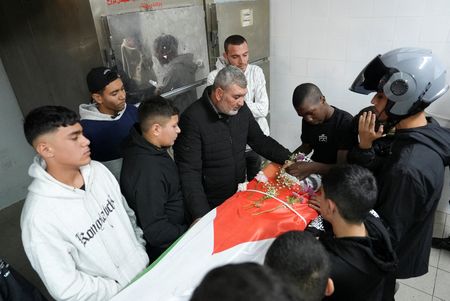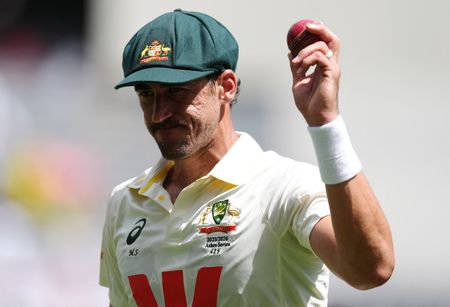By Anastasiia Malenko and Gram Slattery
KYIV/WASHINGTON (Reuters) -Ukrainian President Volodymyr Zelenskiy’s top security official denied on Friday he had agreed to the outline of a Trump administration peace plan, after U.S. officials said he had accepted most of its terms.
Washington has presented Kyiv with a 28-point plan that would endorse many of Russia’s main demands, requiring Kyiv to give up additional territory, cut back the size of its military and forever abandon hope of joining the NATO western alliance.
U.S. officials said the plan was drafted after consultations with Rustem Umerov, secretary of Ukraine’s National Security and Defense Council, who served as defence minister until July and is a close ally of President Volodymyr Zelenskiy.
“This plan was drawn up immediately following discussions with one of the most senior members of President Zelenskiy’s administration, Rustem Umerov, who agreed to the majority of the plan, after making several modifications, and presented it to President Zelenskiy,” a senior U.S. official said on Thursday.
But Umerov said on Friday he had not discussed the plan’s terms, much less approved them.
“During my visit to the United States, my role was technical — organizing meetings and preparing the dialogue. I provided no assessments or, even more so, approvals of any points. This is not within my authority and does not correspond to the procedure,” he wrote on Telegram.
ZELENSKIY: WE ARE READY FOR ‘CONSTRUCTIVE, HONEST’ WORK
Zelenskiy, who met a U.S. Army delegation on Thursday, has acknowledged receiving the plan but has not commented directly on its contents.
“Our teams – Ukraine and the USA – will work on the points of the plan to end the war,” the president wrote overnight on Telegram. “We are ready for constructive, honest and prompt work.”
The Kremlin, which has so far been cautious in public, said it had not yet been informed that Kyiv was prepared to negotiate over the plan.
RUSSIA’S DEMANDS SPELLED OUT, KYIV’S LEFT VAGUE
The plan, a copy of which was reviewed by Reuters, includes terms that Ukrainian officials have previously dismissed as tantamount to surrender after their soldiers fended off a full-scale Russian invasion for nearly four years at huge cost.
It would require Ukraine to withdraw from territory it still controls in eastern provinces that Russia claims to have annexed, while Russia would give up smaller amounts of land it has captured in other regions.
Ukraine would be permanently barred from joining the NATO military alliance, and its armed forces would be capped at 600,000 troops. NATO would agree never to station troops there.
Sanctions against Russia would be gradually lifted, Moscow would be invited back into the G8 group of industrialised countries, and frozen Russian assets would be pooled in an investment fund, with Washington given some of the profits.
But while the plan spells out many of the elements long sought by Russia in considerable detail, it also touches on some of Ukraine’s key aims, though mainly in vaguer terms.
One of Ukraine’s main demands, for enforceable security guarantees equivalent to the NATO alliance’s mutual defence clause to deter Russia from attacking again, is dealt with in a single line with no details: “Ukraine will receive robust security guarantees”.
European countries, who are now funding Ukraine’s defence alone after President Donald Trump cancelled financial support from the United States, were excluded from drawing up the plan. A U.S. delegation in Kyiv was expected to brief European embassies there on its contents later on Friday.
“As for the peace plan we understand the President Zelenskiy has been presented with, we have always said for any plan to work it needs to be with Ukraine and the Europeans on board,” the EU foreign policy chief, Kaja Kallas, said in Brussels.
Trump, who returned to office this year vowing to quickly end the war, has reoriented U.S. policy away from staunch support for Ukraine towards accepting some of Russia’s justifications for its 2022 invasion of its neighbour.
But he has also expressed some impatience with Moscow. Last month he cancelled a proposed summit with Russia’s Vladimir Putin and imposed sanctions on Russia’s two main oil companies, a step never taken by his pro-Ukrainian predecessor Joe Biden.
The full force of those sanctions was due to come into effect on Friday, the deadline Washington has given for foreign buyers of Russian oil to wind down their purchases. The U.S. sanctions have driven down the price of Russian oil.
White House press secretary Karoline Leavitt told a news briefing that Secretary of State Marco Rubio and U.S. special envoy Steve Witkoff had been quietly working on the plan for about a month and that Trump supports the plan.
“This plan was crafted to reflect the realities of the situation, after five years of a devastating war, to find the best win-win scenario, where both parties gain more than they must give,” she said.
The acceleration in U.S. diplomacy comes at an awkward time for Kyiv, with its troops on the back foot on the battlefield and Zelenskiy’s government undermined by a corruption scandal. Parliament fired two cabinet ministers on Wednesday.
Ukraine successfully repelled Russia’s initial assault on Kyiv in 2022 and recaptured swathes of occupied territory in the war’s first months. But after a failed Ukrainian counteroffensive in 2023, the war has descended into a relentless grind along a 1,200-km (750-mile) front line, with Russia making slow, costly advances.
With the war’s fourth winter approaching, Russian troops occupy almost one-fifth of Ukraine and are pushing forward while bombarding Ukrainian energy supplies.
Russia says it has taken control of the city of Kupiansk in northeastern Ukraine and most of Pokrovsk in the east, its first big prizes in nearly two years. It released footage of its troops patrolling bombed-out streets in part of Pokrovsk.
Kyiv denies losing control of those cities but has acknowledged that Russia is making slow gains.
(Writing by Peter Graff; editing by Philippa Fletcher)

